|
Arizona
has a rich sedimentary rock record both in the northern part
of the State and south of Tucson. Trilobites, which are only
found in Paleozoic aged strata can be found in many of them,
although they are rare except in Cambrian rocks. The rarest and
hardest to find trilobites are in Permian aged rock. This includes
in northern Arizona the Kaibab and the Fort Apache Limestones.
But the Fort Apache is a very thin bed in the Supai formation
- only tens of feet thick west of Payson, and at a maximum of
100 feet thick in the inaccessible areas on the Fort Apache Indian
reservation which is the easternmost exposure. East of Payson,
the limestone contains virtually NO fossils. This starts to change
around Strawberry north of Payson where very rare gastropods
can be found.
Finally,
the easternmost exposures on Highway 260 just before you top
the Mogollon Rim (southern edge of the Colorado Plateau) are
the last you will find until a hundred miles to the east on the
reservation. Fortunately, there are areas along the High line
trail that cut right into the scree slopes of the Fort Apache
Limestone outcrops. Here, for the very first time we can find
fossiliferous limestones with silicified invertebrates which
can be released by treatment in muriatic acid. (about 10% dilution)
Very
little has been published on the Fort Apache Limestone recently.
Up until recently, the best I had was the 1964 paper "Stratigraphy
of the Fort Apache Member Supai Formation (Permian) East-Central
Arizona" by Thomas Gerrard of the University of Arizona.
Although he discusses the stratigraphy and geology at length,
very little information on the enclosed fossils is to be had.
Fortunately,
I was able to get through a very kind fossil forum member a copy
of Winters epochical paper from the GSA Memoir 89 - "Supai
Formation Permian of Eastern Arizona" written in 1963. (Nothing
significant has been written since.) This outstanding 99 page
memoir covers not only what is now called the Schnebly Hill formation
which is a Sahara type dune complex that brackets the limestone
above and below, but a superb treatment of the rare fossils which
they found in the Fort Apache Limestone - From the richest 6
areas directly on the Indian reservation. What Winters did was
truly inspiring as far as collection and field work. They spent
1947 collecting one ton of limestone from the best localities,
and then trucked this huge crate of rock back to the Smithsonian
where they spent years acid reducing the rock down to its insoluables!
And it took them over a decade to write the Memoir in 1963 on
the geology and paleontology of the formations. From that one
ton of rock, they obtained a few fragmentary trilobite fossils
and many other more common types such as mollusks.
And this
leads me up to the present. We have brought back so far over
a hundred pounds in promising rock in our backpacks, and spent
many hours dissolving it in the masonry muriatic to free the
specimens. Then three sizes of sieves were used to sort them
according to size. Amongst the countless tiny gastropods which
dominate the fauna present, two or three trilobite pygidia and
many fragments were found in the acid fines. The preservation
is key - unlike all the other fossils present which are preserved
in a white silica that is fairly opaque, the trilobites are always
preserved as casts of a yellow translucent opal like silica,
making pieces easier to spot in the sorting trays under the stereo
microscopes. You can see this unusual caramel colored preservation
here in this set of images from the first 120 pounds of rock
we have processed.
Winters
partial specimens allowed him to get a good approximation of
the genus and possibly the species. Below is what a complete
pygidium of Anisopyge sp. looks like from the Treatise volume
O. So rare are Permian trilobites, only a page is devoted to
all of them!
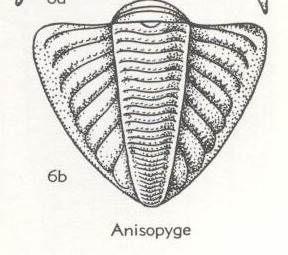 |
Winters
identified the trilobites he found as fragments as Anisopyge.
However, the pygidiums we found were closer to Ditomopyge in
shape, but the glabella was not indicative of this genus. |
10x microscope
shot (field about the size of a dime) of many of the common trilobite
fragments found. Winters identifies this trilobite as Anisopyge
cf. A. inornata. (cf. is a Latin abbreviation meaning "compares
to") What we have found here at this site is Phillipsidae
indet., which is a generic term for the family of trilobites,
and non specific. But it does not appear to be the same as Winters
find.
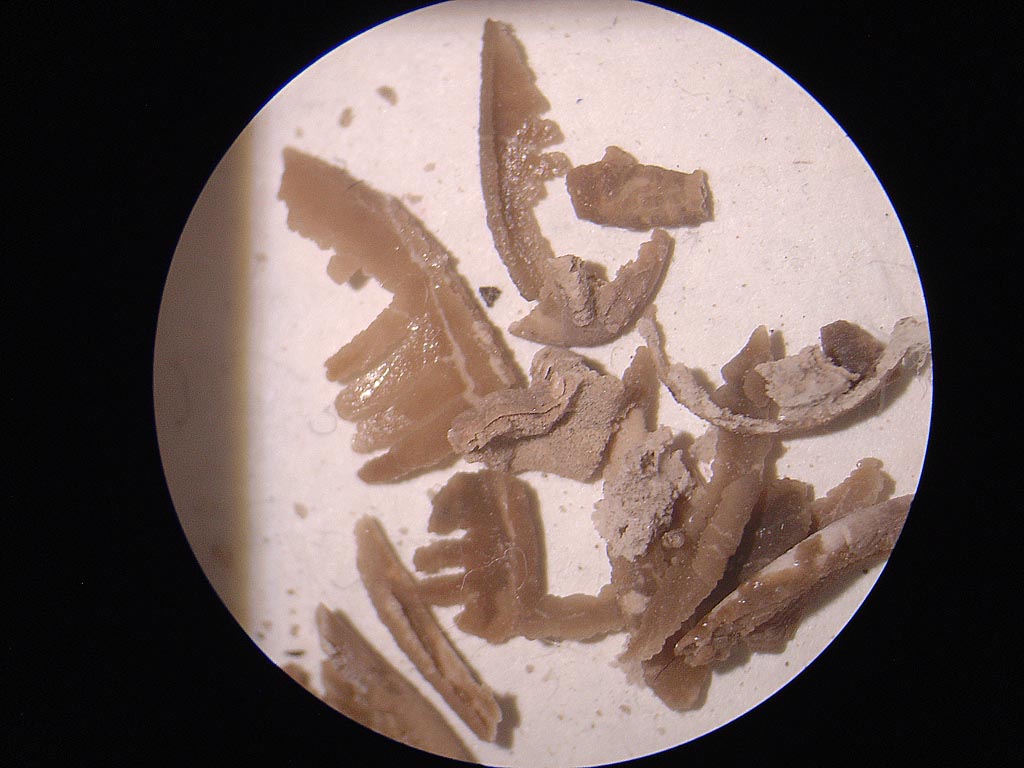
In the
most recent trip with 60 pounds of rock, this all we got - a
few pieces of the outer rim of the pygidium.
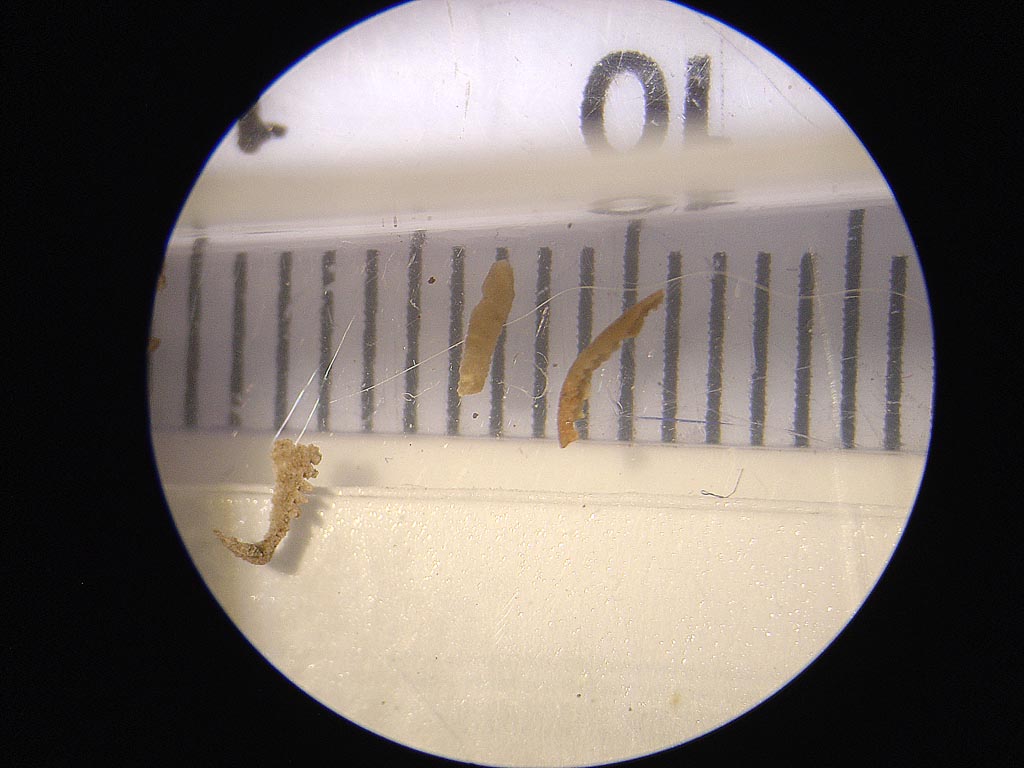
One of
the best so far, was at the second locality furthur down the
trail. 10x with new microscope:
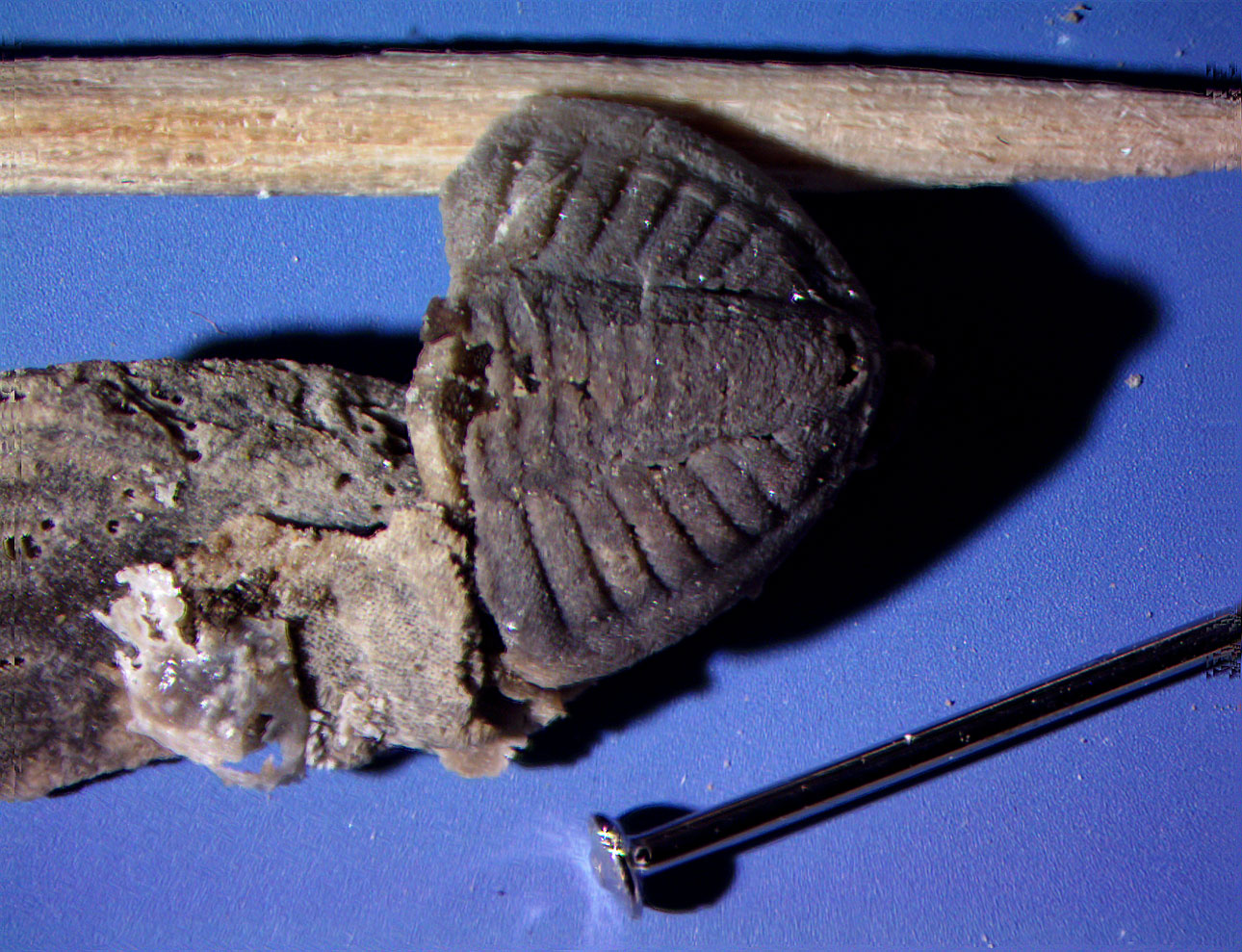
Two examples
of some well preserved free cheeks including the eye cutout and
genial spines. Here is the left side set:
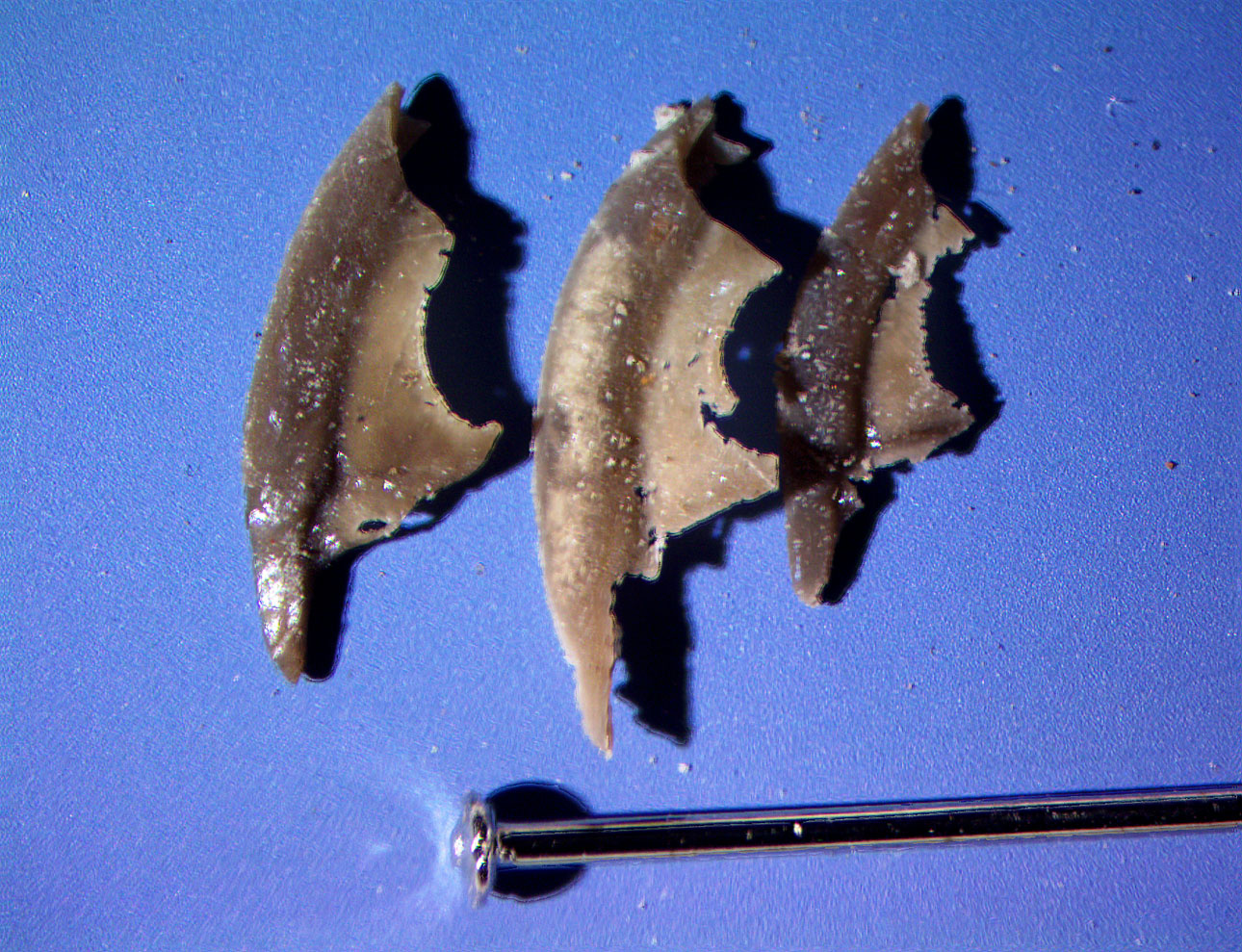
The right
side set:
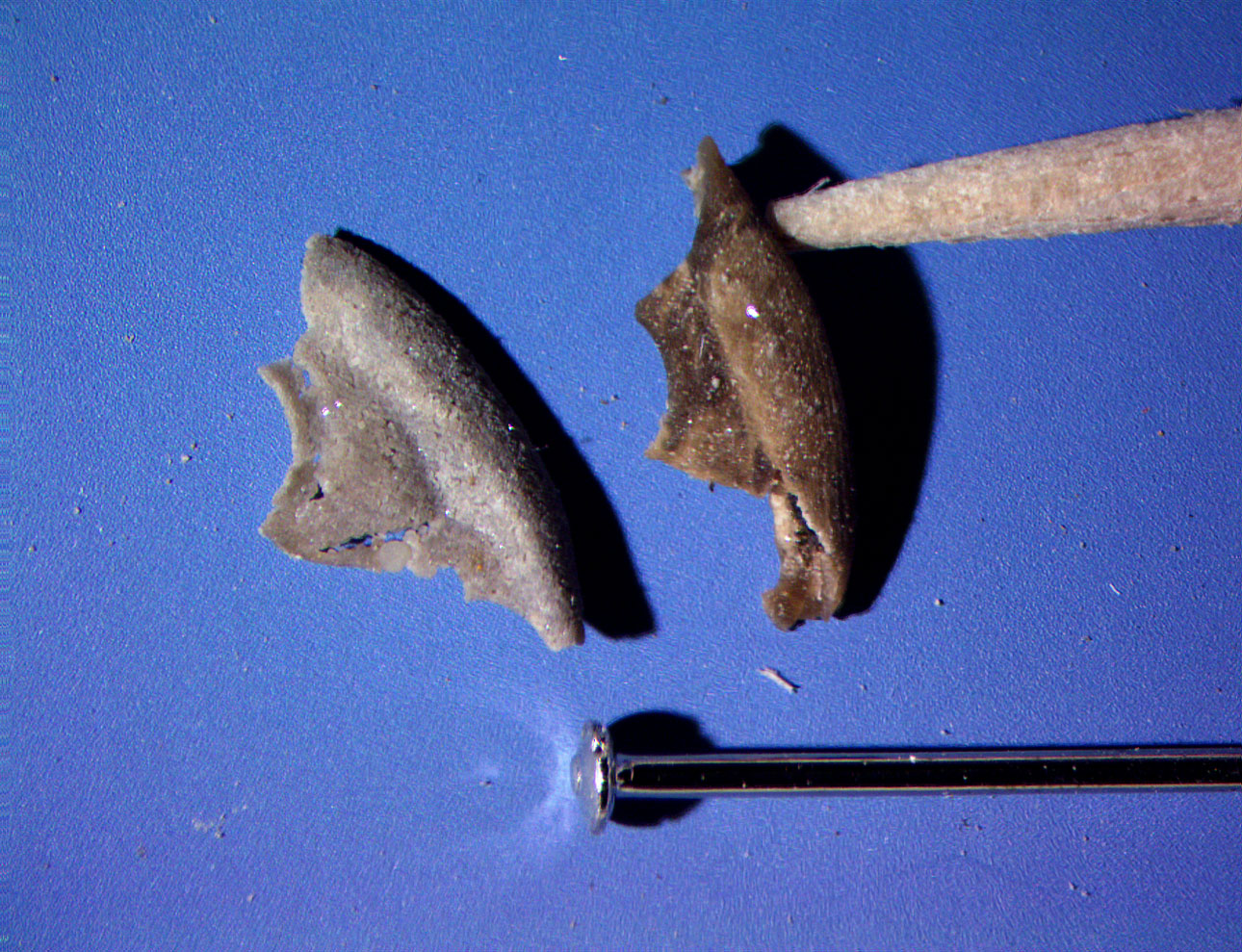
Partial
specimen - a nice pygidium with the ribs visible. it is roughly
1 cm tall. The trilobite would have been less than an inch in
size.
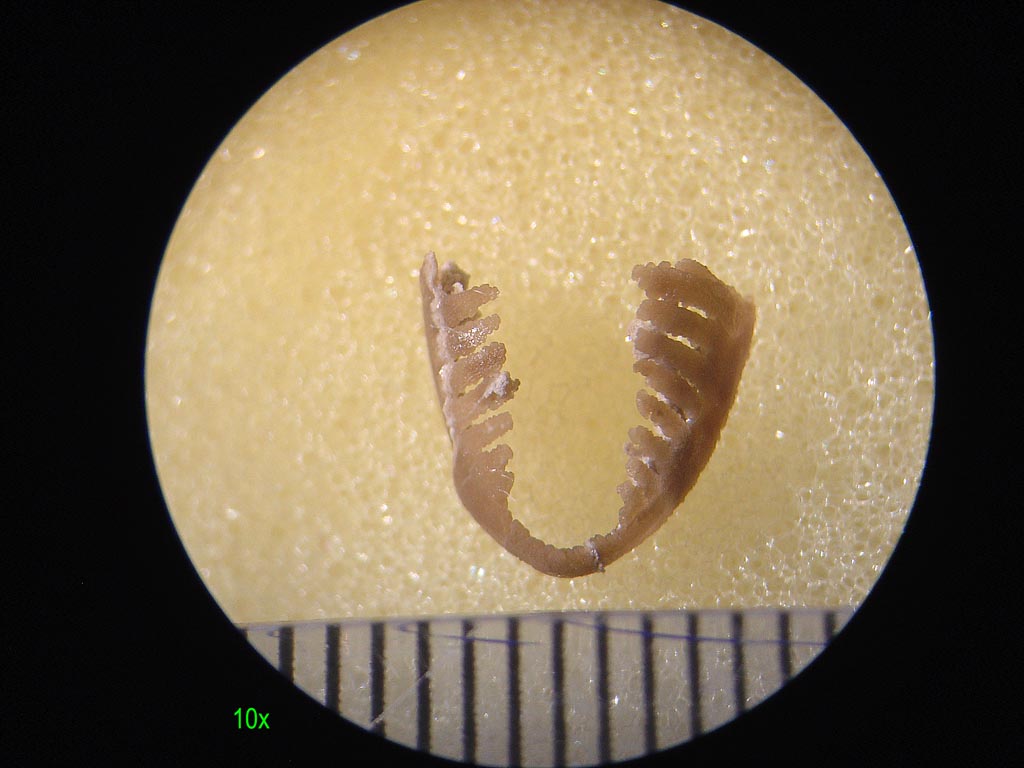
Oblique
view same specimen.
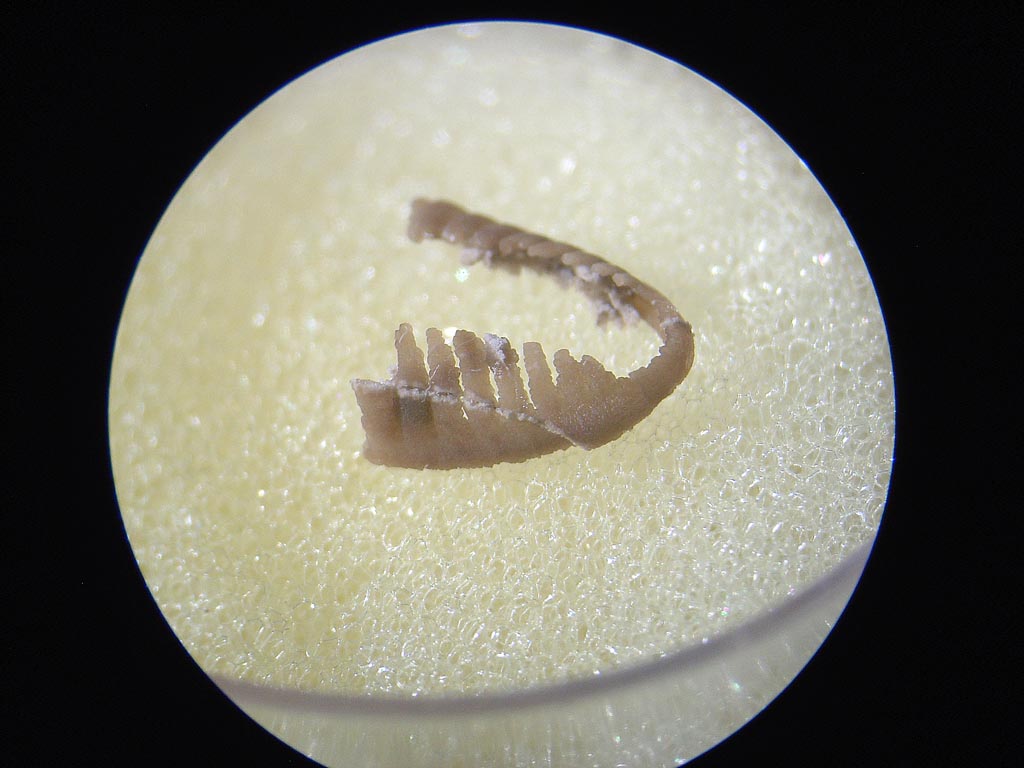
Another
pygidium (tail) still attached to some matrix. The specimens
are so delicate, I am afraid to even try to pick them up with
tweezers, as they will fall apart. To move them I use a wet toothpick
and stick them to the fossils.
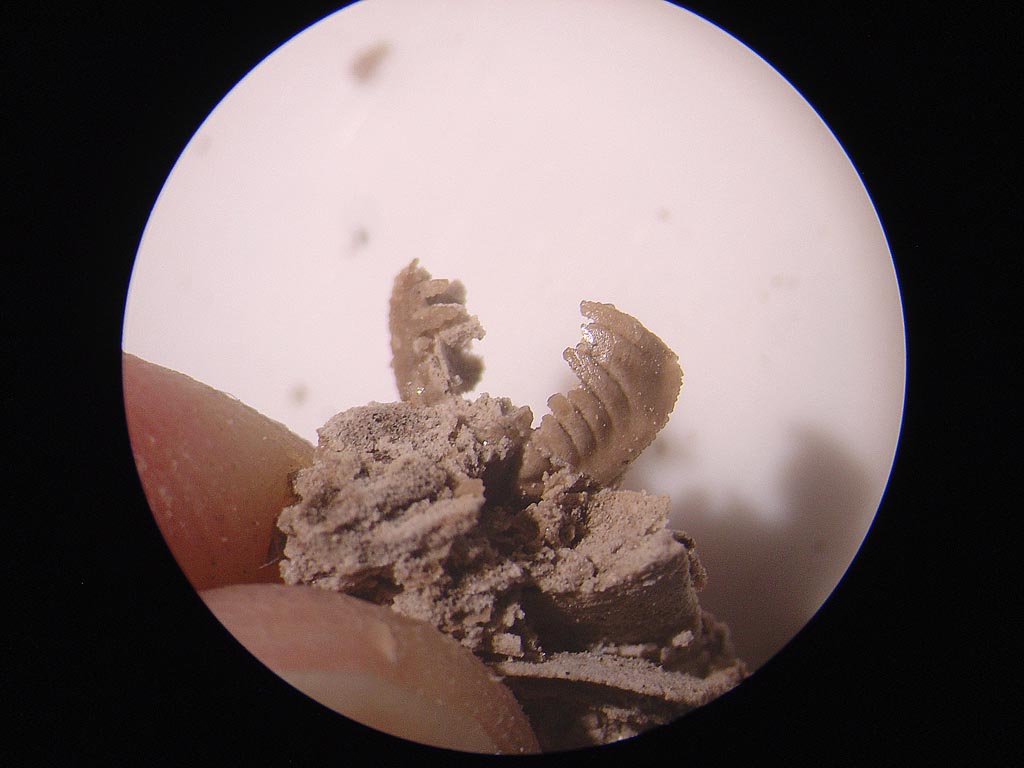
A glabella
(nose) both front lip and top part which fell apart.
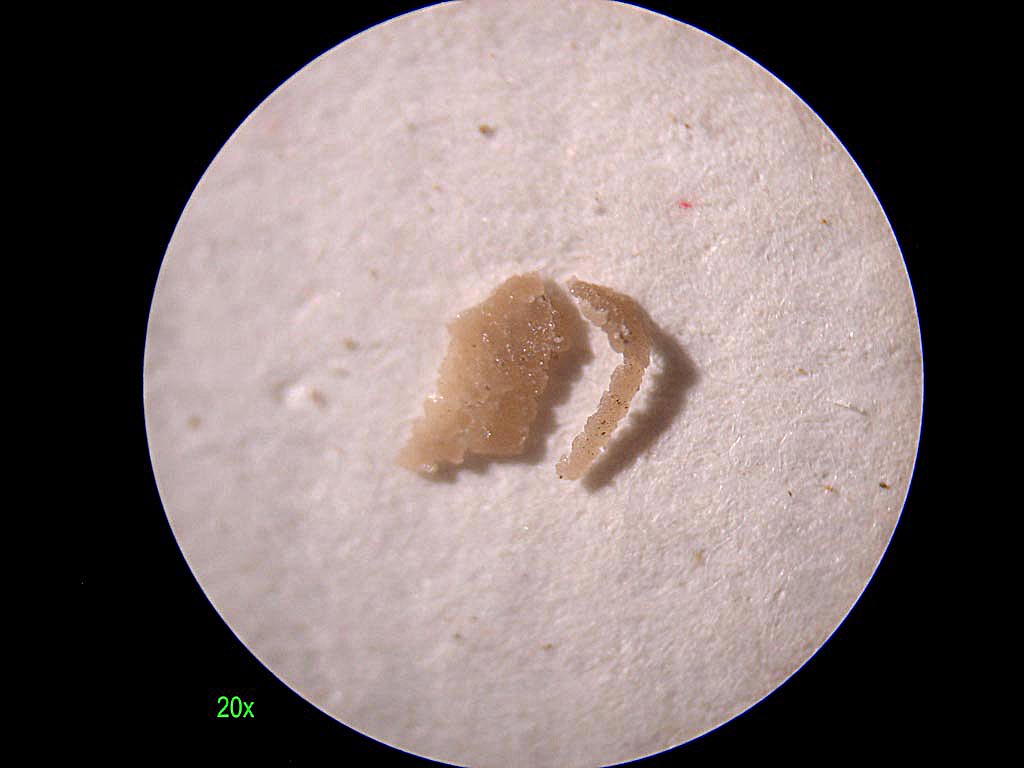
Here
I am at the locality this morning (Sept. 1) looking for promising
limestones. Usually, the ones with the most urchin spines on
the surface seem to have the best fossils inside!
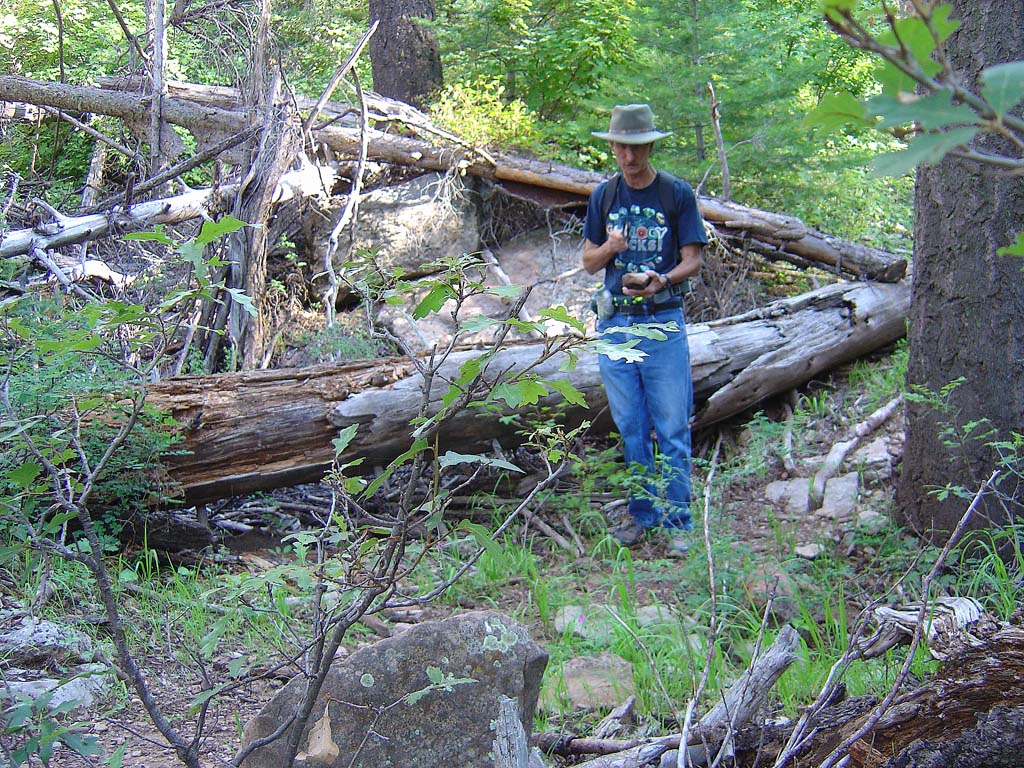
|